 |
King of Chemicals Manufacturers |
Specifications, Properties, Uses, SDS of Metoprolol Tartrate BP Ph Eur USP IP EP Grade Manufacturer Supplier Exporter Wholesale & Small Packs, CAS Number 56392-17-7. |
|
| King of Chemicals has several associated companies having accreditations like cGMP, GLP - FDA Approved Good Manufacturing Practice and Good Laboratory Practice of WHO standard, ISO-9001, ISO-14001, ISO/IEC 17025, ISO ISO-45000, HACCP, FSSC 220000, FSSAI, "REACH" Registered, Kosher & Halal Certified. e-CTD and DMF support can be made available if needed. We offer USP NF BP Ph Eur EP IP JP Analytical Reagent FCC Food Grade Chemicals & Nutraceuticals. | |
        |
|
Muby Chem Pvt. Ltd. is a several decades old group of companies, engaged in manufacturing, supplying, distributing, wholesale supplies of Metoprolol Tartrate BP Ph Eur USP IP EP Grade for actual users, including retail or small pack supplies for research and development work.
We supply fine and speciality chemicals, pharmaceutical excipients, mineral fortifiers in chemically pure, analytical reagent grade, IP BP USP Ph Eur EP JP and other pharmaceutical grade monograph including FCC Food grade chemicals and Nutraceuticals at best prices. We and/or our associated units have all the facilities to supply as per cGMP standard observing good manufacturing practice and good laboratory practice. We can assure low microbial count and also offer a test certificate for the same. We maintain warehouses across USA, India, and UAE. Our group exports to USA, Canada, Mexico, Argentina, Brazil, Chile, Korea, Malaysia, Thailand, Indonesia, Europe, and several other parts of the world. We supply in wholesale container loads to small pack of few grams. Solid products may be specified for it size and shape as desired by the buyer.
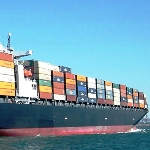
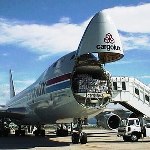
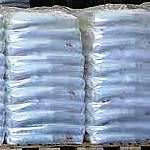
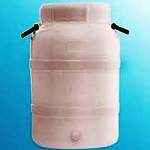
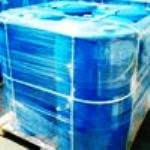
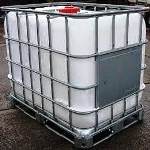
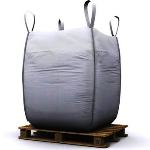
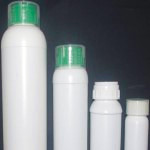
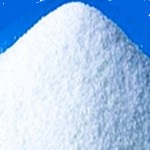
Metoprolol Tartrate CAS Number 56392-17-7
For Properties Specifications Uses of Metoprolol Tartrate Click Properties, Specifications, Uses, Price, Process of Metoprolol Tartrate Manufacturer.
For For SDS MSDS Sheet of Metoprolol Tartrate Click SDS Safety Data Sheet MSDS Sheet of Metoprolol Tartrate Manufacturer.
The Properties, Specifications, Monograph and Uses of Metoprolol Tartrate:
Metoprolol Tartrate has demonstrated efficacy in managing hypertension, angina, and other cardiovascular conditions while maintaining a high level of safety and tolerability in its use.
Metoprolol Tartrate BP Ph Eur Grade Specifications:
C34H56N2O12 --- 685 CAS 56392-17-7
DEFINITION
Bis[(2RS)-1-[4-(2-methoxyethyl)phenoxy]-3-[(1-methylethyl)amino]propan-2-ol] (2R,3R)-2,3-dihydroxybutanedioate.
Content: 99.0 per cent to 101.0 per cent (dried substance).
CHARACTERS
Appearance: White or almost white, crystalline powder or colourless crystals.
Solubility: Very soluble in water, freely soluble in ethanol (96 per cent).
It shows polymorphism.
IDENTIFICATION
A. Specific optical rotation.
B. Infrared absorption spectrophotometry.
Solution S: Dissolve 0.500 g in carbon dioxide-free water and dilute to 25.0 mL with the same solvent.
Appearance of solution: Solution S is clear and not more intensely coloured than reference solution.
pH: 6.0 to 7.0 for solution S.
Specific optical rotation: + 7.0 to + 10.0 (dried substance), determined on solution S.
Impurities M, N, O: To pass the test by Thin-layer chromatography.
Related substances: To pass the test by Liquid chromatography.
Metoprolol Tartrate USP Grade Specifications:
(C15H25NO3)2-C4H6O6 684.81
2-Propanol, 1-[4-(2-methoxyethyl)phenoxy]-3-[(1-methylethyl)amino]-, (±)-, [R-(R*,R*)]-2,3-dihydroxybutanedioate (2:1) (salt);
(±)-1-(Isopropylamino)-3-[p-(2-methoxyethyl)phenoxy]-2-propanol l-(+)-tartrate (2:1) (salt)
1-(Isopropylamino)-3-[p-(2-methoxyethyl)phenoxy]-2-propanol (2:1) dextro-tartrate salt CAS 56392-17-7
UNII: W5S57Y3A5L
UNII: GEB06NHM23
DEFINITION
Metoprolol Tartrate contains NLT 98.0% and NMT 102.0% of metoprolol tartrate [(C15H25NO3)2-C4H6O6], calculated on the dried basis.
IDENTIFICATION
A. Infrared Absorption.
B. The retention time of the major peak of the Sample solution corresponds to that of the Standard solution, as obtained in the Assay.
Residue on Ignition: NMT 0.1%
Organic Impurities: To pass the test.
Optical Rotation, Specific Rotation:
Sample solution: 20 mg/mL in water
Acceptance criteria: +6.5° to +10.5° (t = 20°)
pH: 6.0–7.0 in 100 mg/mL of Metoprolol Tartrate in water
Loss on Drying: Dry a sample in a vacuum at 60C for 4 h. Acceptance criteria: NMT 0.5%
Metoprolol Tartrate is also available as per IP EP grade monograph.
The MSDS-SDS Hazard Statement of Metoprolol Tartrate:
Metoprolol Tartrate SDS, Safety Data Sheet
MSDS Sheet, Material Safety Data Sheet 02-April-25
1. Product Identification
Product Name & Other Names: Metoprolol Tartrate.
CAS Number: 56392-17-7
EINECS EC Number: 260-148-9
Relevant uses and uses advised against (if any): Industrial Manufacturing.
2. Hazards Identification
GHS, Globally Harmonized System Classification in accordance with 29 CFR 1910
Classification according to Regulation (EC) No 1272/2008
Reproductive toxicity Category 2, H361
Labeling according to GHS USA & Regulation (EC) No 1272/2008
GHS Label Elements 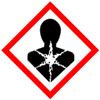 Health Hazard |
Signal Words: Danger
Hazard Statements:
H361: Suspected of damaging fertility or the unborn child.
Precautionary Statements:
P202: Do not handle until all safety precautions have been read and understood.
P260: Do not breathe dust/fume/gas/mist/vapors/spray.
P262: Do not get in eyes, on skin, or on clothing.
P270: Do not eat, drink or smoke when using this product.
P280: Wear protective gloves/protective clothing/eye protection/face protection.
P302+352: IF ON SKIN: Wash with plenty of soap and water.
P305+351+338: IF IN EYES: Rinse cautiously with water for several minutes. Remove contact lenses if present and easy to do – continue rinsing.
3. Composition/Information on Ingredients
Product Name & Other Names: Metoprolol Tartrate.
CAS Number: 56392-17-7
EINECS EC Number: 260-148-9
4. First Aid Measures
Inhalation: Remove affected person to fresh air; if normal breathing has not returned within a few minutes after exposure, get medical attention.
Skin: Remove contaminated clothing; wash affected area with soap and water; launder contaminated clothing before reuse. Seek medical attention.
Eyes: Immediately, flush eyes for 15 minutes in clear running water while holding eyelids open; seek medical attention immediately.
Ingestion: Drink two glasses of water followed by milk, milk of magnesia or other non-alcoholic liquids; Do not induce vomiting; seek medical attention immediately.
5. Fire Fighting Measures
Flammable Limits: No unusual fire or explosion hazards noted. However, it will burn at high temperature.
General Hazards: Contact with eyes causes immediate severe irritation of the eye and eyelids.
Extinguishing Media: Carbon dioxide, water fog, dry chemical, chemical foam.
Organics solids, may be ignitable. Keep containers cool by spraying with water. Use extinguishing media appropriate for surrounding fire. Avoid solid water jet as it may spread the fire.
Fire & Explosion Hazard: May evolve toxic fumes, oxides of carbon (COx), oxides of nitrogen (NOx) under fire conditions.
In case of fire, wear a full face positive-pressure self-contained breathing apparatus and protective suit. Self - contained respiratory equipment; cool containers to prevent pressure buildup and explosion when exposed to extreme heat.
Hazardous Combustion Products: Products of combustion include smoke, toxic fumes, oxides of carbon to include carbon monoxide, nitrogen oxides.
Specific Methods: Cool containers exposed to flames with water until well after the fire is out.
Special Information: In the event of a fire, wear full protective clothing and NIOSH-approved self-contained breathing apparatus with full face piece operated in the pressure demand or other positive pressure mode.
6. Accidental Release Measures
Personal precautions, protective equipment, and emergency procedures: It may support combustion. Do not touch damaged containers or spilled material unless wearing appropriate protective clothing. Avoid breathing dust/fumes/gas/mist/vapors/spray. Use individual protective equipment (waterproof boots, suitable protective clothing, safety glasses, etc.).
Environmental precautions: Do not let the product enter drains, soil, or water sources.
Methods and materials used for containment cleanup procedures and Storage: Contain spilled material. Cover with an inert, non-combustible absorbent material, (e.g., sand, earth, diatomaceous earth, vermiculite). Vacuum or sweep-up and remove to an approved disposal container.
7. Handling and Storage
Precautions for safe handling: Apply according to good manufacturing and industrial hygiene practices. Ensure proper ventilation. Wash thoroughly after handling. Do not drink, eat, or smoke while handling. Avoid contact with skin, eyes, and clothing. Minimize dust generation. Avoid breathing dust/fumes/gas/mist/vapors/spray. Provide appropriate exhaust ventilation at places where dust is formed. Keep container tightly closed. Avoid ingestion and inhalation. Use individual protective equipment (waterproof boots, suitable protective clothing, safety glasses, etc.).
Conditions for safe storage, including any incompatibilities: Store in cool, dry, and ventilated area away from heat sources and protected from sunlight in tightly closed original container. Keep air contact to a minimum. Do not leave the material container open. Store protected from heat, sparks and ignition sources and incompatible materials. Avoid inhalation of dust/mist/vapor. Do not store with incompatible materials like oxidizing agent. Storage: Room temperature in tight, light-resistant containers. Refrigeration preferred. Short term shipping may be ambient.
8. Exposure Controls/Personal Protection
Engineering Controls: The use of local exhaust ventilation is recommended to control emissions near the source. Provide mechanical ventilation of confined spaces. Use corrosion-resistant, explosion-proof ventilation equipment.
Exposure Limits: Not established.
Ventilation System: A system of local and/or general exhaust is recommended to keep employee exposures low.
Personal Respirators (NIOSH Approved): For conditions of use where exposure to dust or mist is apparent and engineering controls are not feasible, a particulate respirator may be worn.
Skin Protection: Wear protective gloves and clean body-covering clothing.
Eye Protection: Use chemical safety goggles and/or full-face shield where dusting or splashing of solutions is possible. Maintain eye wash fountain and quick-drench facilities in work area.
Other Control Measures: Maintain good housekeeping in work area. Handle in accordance with good industrial hygiene and safety practice.
9. Physical and Chemical Properties
Appearance: White to almost white powder to crystal.
Odor: No controlled found.
Odor threshold: No controlled found.
pH: No controlled found.
Relative density: No controlled found.
Melting/Freezing Point: 120C to 124C.
Initial boiling point and boiling range: 399C.
Flash point: No controlled found.
Auto-ignition temperature: No controlled found.
Decomposition temperature: No controlled found.
Upper/lower flammability or explosive limits: No controlled found.
Vapor pressure: No controlled found.
Vapor density: No controlled found.
Evaporation rate: No controlled found.
Flammability (solid, gas): No controlled found.
Partition coefficient: n-octanol/water: No controlled found.
Solubility in Water: Soluble in water, methanol and chloroform.
Viscosity: No controlled found.
10. Stability and Reactivity
Stability: Stable at normal temperatures and operating conditions.
Conditions to Avoid: Avoid excessively high temperatures and contact with strong oxidizing agents.
Incompatibilities: Oxidizing Agent.
Decomposition: Decomposition yields toxic fumes, oxides of carbon (COx), oxides of nitrogen (NOx.
Polymerization: Polymerization will not occur.
11. Toxicological Information
Toxic if swallowed.
Toxicity Data:
LD50 Oral - Rat - >5000 mg/kg
Reproduction: Suspected of damaging fertility or the unborn child.
Carcinogenicity: Not listed as a human carcinogen by OSHA, IARC, ACGIH & NTP.
12. Ecological Information
Toxicity to fish: No controlled found.
Results of PBT and vPvB assessment: No controlled found.
Persistence and degradability: Unlikely to persist due to water solubility.
Mobility in soil: Likely to be mobile due to water solubility.
Bioaccumulative potential: No controlled found.
Mobility: No data found.
13. Disposal Considerations
Dispose of it in accordance with Local, State, and Federal Regulations. Follow all the pollution control laws.
14. Transport Information
DOT USA & ADR/RID Europe: Not controlled.
IATA & IMDG: Not controlled.
15. Regulatory Information
No significant information is available.
Section 16 - Additional Information
Disclaimer:
**************************
Our company provides this MSDS sheet in good faith but makes no representation as to its comprehensiveness or accuracy. This SDS sheet is intended only as a guide to the appropriate precautionary handling of the material by a properly trained person using this product. The above information has been compiled from various sources and has the possibility of discrepancy and being out-dated information. Individuals receiving the information must exercise their independent judgment and do further search in determining its appropriateness for a particular purpose. In no case shall our company be liable to loss or damages by the product user.
**************************

Metoprolol Tartrate Manufacturers, Suppliers, Exporters, Wholesalers:
King of Chemicals manufacturers

Plot No. 2900/46&47 + 2900/163to167, GIDC, Ankleshwar, Dist. Bharuch, India
India, USA, UAE
TEL: (Office) 91-22-23774610, 91-22-23723564
e-mail: info@kingofchemicals.com
Copyright and Usual Disclaimer is Applicable --- April 8, 2025
If I give you “My Word” Nobody can undo it.
If I sign an “Agreement” my Lawyer will undo it
Our products are for industrial and laboratory use only. The user must test the material before use. We are not dispensing chemists or druggist and do not offer over the counter type (OTC) products for medical use by individuals.
We and our associates manufacture pure chemicals surpassing Monograph Specifications of Analytical Reagent Standards, British & European Pharmacopoeia BP Ph Eur EP Standard, US Pharmacopoeia USP NF Standard, Indian Pharmacopoeia IP Standard, Japan Pharmacopoeia JP Standard, FCC Food Grade Standard. |
|